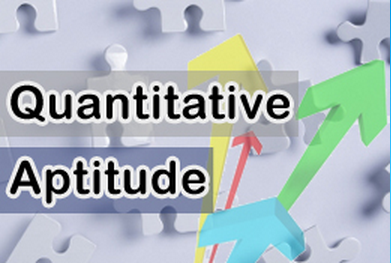Hello Aspirants. Welcome to Online Quantitative Aptitude Section in AffairsCloud.com. Here we are creating question sample in Probability, which is common for all the competitive exams. We have included Some questions that are repeatedly asked in bank exams !!
Questions Penned by Yogit
- A bag contains 5 red balls and 7 blue balls. Two balls are drawn at random without replacement, and then find the probability of that one is red and other is blue.
a) 33/65
b) 35/66
c) 37/66
d) 41/65
e) None of theseAnswer – b) 35/66
Explanation :
(First red ball is drawn and then blue ball is drawn) + (first blue ball is drawn and then red ball is drawn)
(5/12)*(7/11) + (7/12)*(5/11) = 35/66 - A bag contains 3 red balls and 8 blacks ball and another bag contains 5 red balls and 7 blacks balls, one ball is drawn at random from either of the bag, find the probability that the ball is red.
a) 93/264
b) 95/264
c) 91/264
d) 97/264
e) None of theseAnswer – c) 91/264
Explanation :
Probability = probability of selecting the bag and probability of selecting red ball
(1/2)*(3/11) + (1/2)*(5/12) = 91/264 - 12 persons are seated at a circular table. Find the probability that 3 particular persons always seated together.
a) 9/55
b) 7/55
c) 4/55
d) 3/55
e) None of theseAnswer – d) 3/55
Explanation :
total probability = (12-1)! = 11!
Desired probability = (10 – 1)! = 9!
So, p = (9! *3!) /11! = 3/55 - P and Q are two friends standing in a circular arrangement with 10 more people. Find the probability that exactly 3 persons are seated between P and Q.
a) 5/11
b) 4/11
c) 2/11
d) 3/11
e) None of theseAnswer – c) 2/11
Explanation :
Fix P at one point then number of places where B can be seated is 11.
Now, exactly three persons can be seated between P and Q, so only two places where Q can be seated. So, p = 2/11 - A basket contains 5 black and 8 yellow balls. Four balls are drawn at random and not replaced. What is the probability that they are of different colours alternatively.
a) 56/429
b) 57/429
c) 61/429
d) 68/429
e) None of theseAnswer – a) 56/429
Explanation :
sol=> BYBY + YBYB = (5/13)*(8/12)*(4/11)*(7/10) + (8/13)*(5/12)*(7/11)*(4/10) = 56/429 - Direction(Q6 – Q8):
A bag contains 6 red balls and 8 green balls. Two balls are drawn at random one after one with replacement. What is the probability that-
Both the balls are green
a) 13/49
b) 15/49
c) 16/49
d) 17/49
e) None of theseAnswer – c) 16/49
Explanation :
P = (8/14)*(8/14) - First one is green and second one is red
a) 16/49
b) 14/49
c) 11/49
d) 12/49
e) None of theseAnswer – d) 12/49
Explanation :
P = (8/14)*(6/14) - Both the balls are red
a) 14/49
b) 9/49
c) 11/49
d) 12/49
e) None of theseAnswer – b) 9/49
Explanation :
P = (6/14)*(6/14) - Find the probability that in a leap year, the numbers of Mondays are 53?
a) 1/7
b) 2/7
c) 3/7
d) 4/7
e) None of theseAnswer – b) 2/7
Explanation :
In a leap year there are 52 complete weeks i.e. 364 days and 2 more days. These 2 days can be SM, MT, TW, WT, TF, FS, and SS.
So P = 2/7 - A urn contains 4 red balls, 5 green balls and 6 white balls, if one ball is drawn at random, find the probability that it is neither red nor white.
a) 1/3
b) 1/4
c) 1/5
d) 2/3
e) None of theseAnswer – a) 1/3
Explanation :
5c1/15c1 = 1/3
AffairsCloud Recommends Oliveboard Mock Test
AffairsCloud Ebook - Support Us to Grow
Govt Jobs by Category
Bank Jobs Notification



